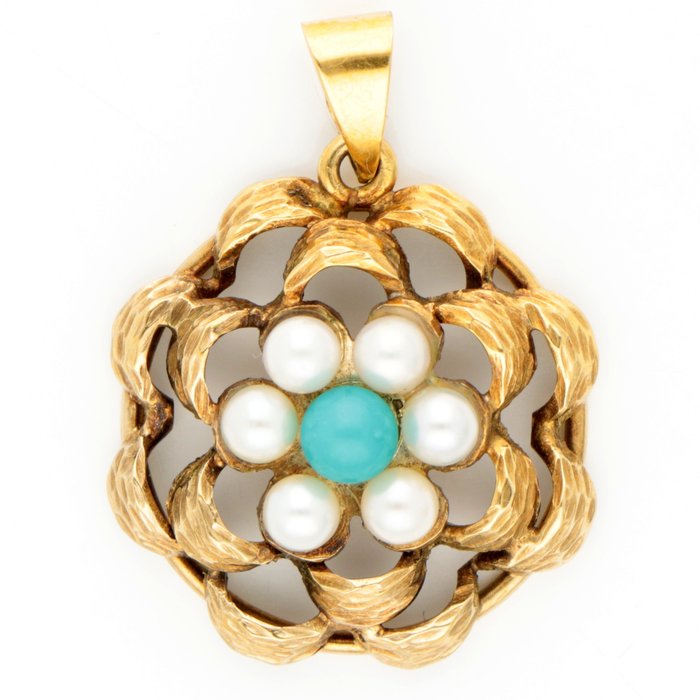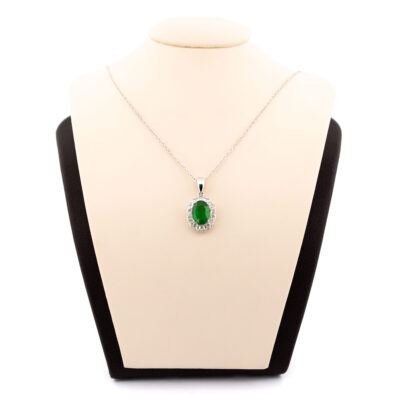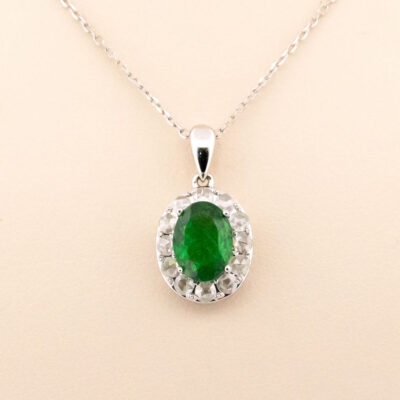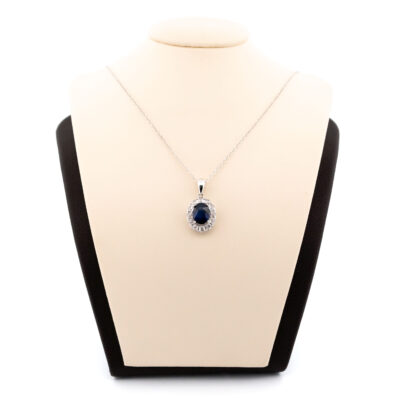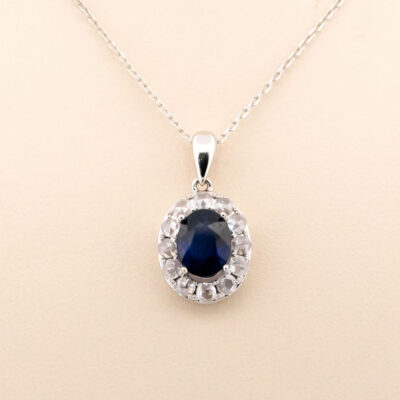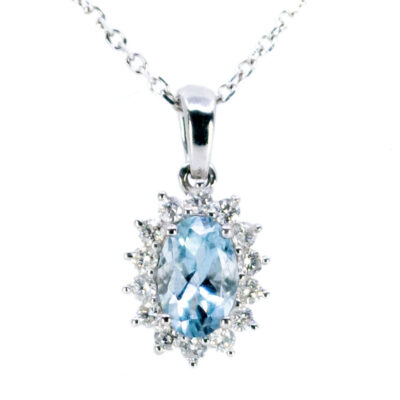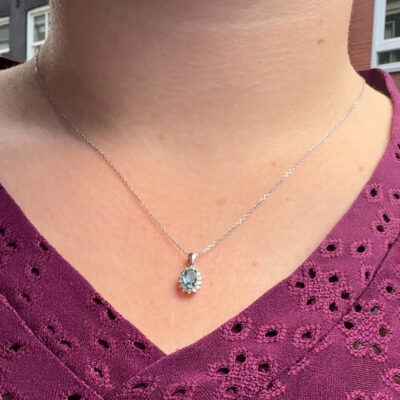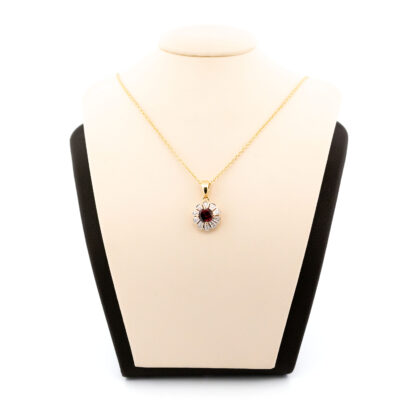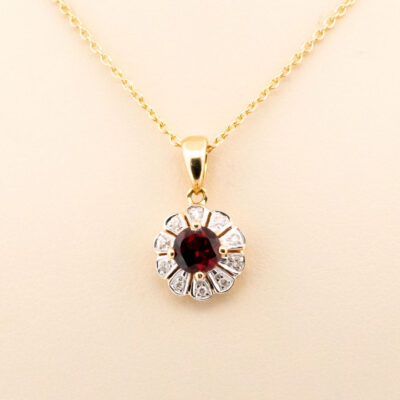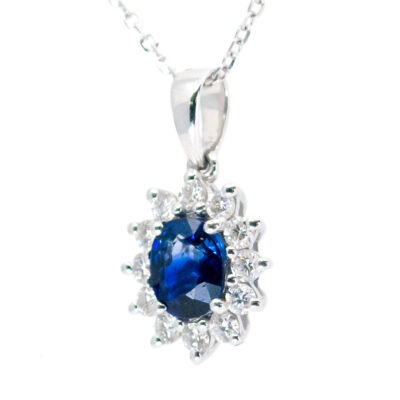Radiating vintage charm, this 14K yellow gold pendant showcases a captivating 4mm turquoise at its heart. Encircled by five lustrous 3mm pearls, it creates a delightful contrast of colors and textures. A stunning tribute to timeless elegance, this piece brings a touch of history to your jewelry collection. ✨
Videos
Radiating vintage charm, this 14K yellow gold pendant showcases a captivating 4mm turquoise at its heart. Encircled by five lustrous 3mm pearls, it creates a delightful contrast of colors and textures. A stunning tribute to timeless elegance, this piece brings a touch of history to your jewelry collection. ✨
Details: 4mm Turquoise, 3mm Pearls, 14k Pendant
Weight in grams: 4.3.
Condition: Very good condition – slightly used with small signs of wear.
| Design Era | |
|---|---|
| Design & Historical Context | Vintage jewelry refers to jewelry that was produced a certain number of years ago, typically at least 20 years or more. It is often characterized by its unique style, craftsmanship, and use of materials that are no longer in production or are hard to find. Vintage jewelry can be made from a wide variety of materials, including gold, silver, platinum, and diamonds, as well as less precious materials such as costume jewelry or Bakelite. It can be influenced by a variety of styles and movements, including Art Deco, Art Nouveau, and Retro. One of the key features of vintage jewelry is its uniqueness and individuality. Unlike modern jewelry, which is often mass-produced, vintage jewelry is often one-of-a-kind or part of a limited production run. This makes it highly collectible and sought after by collectors and vintage enthusiasts. Vintage jewelry is often associated with a sense of history and nostalgia, and it can be a way to connect with the past and appreciate the craftsmanship and artistry of earlier periods. It is highly collectible and can be found at vintage stores, antique shops, and online marketplaces. |
| Key Materials | |
| Materials & Craftsmanship | Turquoise: The Gem of Protection and Serenity Turquoise, with its striking blue-green hue, is one of the oldest known gemstones and has been cherished for thousands of years for its beauty and protective qualities. This opaque gem, often veined with black or brown matrix patterns, is composed of hydrous phosphate of copper and aluminum, which gives it its distinctive color. Historically, turquoise has held deep significance in various cultures. Ancient Egyptians adorned their pharaohs with turquoise jewelry, and it was often used in burial masks and other sacred items. Native American tribes have long revered turquoise as a powerful talisman for protection, healing, and good fortune, believing it could connect the wearer to the spirit world and enhance communication with the divine. In modern jewelry, turquoise is admired for its vibrant color and natural appeal. With a Mohs hardness of 5 to 6, turquoise is softer than many other gemstones, so it is often set in protective settings or used in larger, statement pieces such as rings, necklaces, and bracelets. Turquoise pairs beautifully with silver, which accentuates its earthy, natural tones, making it a popular choice in Southwestern and bohemian-style jewelry. Turquoise is more than just a gemstone; it is a symbol of protection, wisdom, and tranquility. Its rich history and serene color make it a timeless and cherished choice for jewelry that carries both beauty and deep cultural resonance. Pearl: The Gem of Elegance and Purity Pearls, with their natural luster and timeless beauty, are one of the most revered gemstones in the world. Unlike other gems, pearls are organic, formed within the soft tissue of mollusks like oysters and mussels. Their formation process results in a smooth, round gem with a soft, iridescent glow, often referred to as the "pearl essence." Historically, pearls have been a symbol of purity, wisdom, and wealth. In ancient Rome, they were considered the ultimate status symbol, while in ancient China, pearls were believed to protect against fire and dragons. During the Renaissance, pearls were so highly valued that they were reserved for royalty and nobility, symbolizing perfection and integrity. In modern jewelry, pearls are cherished for their classic elegance and versatility. They are commonly found in a range of colors, from the traditional white and cream to rare black, pink, and golden hues. Pearls are often strung into necklaces, set into earrings, or used as delicate accents in rings and bracelets. Their softness, with a Mohs hardness of 2.5 to 4.5, requires gentle care, but their beauty and sophistication are unmatched. Pearls are more than just a gem; they are a symbol of grace, purity, and timeless style. Their natural origins and understated elegance make them a beloved choice for jewelry that exudes refinement and sophistication. 14k: The Durable Choice for Everyday Elegance 14k gold is a popular and practical choice in fine jewelry, known for its durability, affordability, and beautiful color. The "14k" signifies that the gold is composed of 58.3% pure gold and 41.7% alloyed metals, such as copper, silver, nickel, or zinc. This combination results in a strong and resilient material that can withstand the rigors of daily wear, making it an ideal option for those seeking both beauty and durability. Historically, gold has always been a symbol of wealth and luxury, and 14k gold strikes a perfect balance between the rich appearance of gold and the strength needed for everyday use. Because of its lower gold content compared to 18k or 24k gold, 14k gold is more affordable, making it a popular choice for a wide range of jewelry pieces. In modern jewelry, 14k gold is appreciated for its versatility and variety. It is available in several colors, each achieved by mixing gold with different metals: Yellow Gold: A classic and timeless choice, 14k yellow gold has a warm, golden hue that complements most skin tones and is well-suited for both modern and traditional designs. White Gold: Created by alloying gold with white metals like nickel or palladium, 14k white gold has a sleek, silver-like appearance. It is often rhodium-plated for added shine and is a popular choice for engagement rings and other contemporary jewelry. Rose Gold: Achieved by mixing gold with copper, 14k rose gold has a soft, pinkish hue that has gained popularity for its romantic and vintage appeal. It is a favorite for those seeking a unique and stylish alternative to traditional gold colors. 14k gold is commonly used in a wide array of jewelry, including rings, necklaces, bracelets, earrings, and watches. Its durability makes it especially suitable for pieces that are worn daily, such as wedding bands and engagement rings, where the balance between strength and beauty is crucial. 14k gold is more than just a practical choice; it is a symbol of enduring style and everyday luxury. Its ability to retain the look of gold while offering greater resistance to scratches and dents makes 14k gold a versatile and timeless option for any jewelry collection. Whether in a simple band or an elaborate design, 14k gold offers a perfect blend of elegance and durability that can be enjoyed for years to come. |
| Weight (in grams) | 4.3 |
| Condition | Very good condition – slightly used with small signs of wear |
By following these tips, you can enjoy your precious jewelry for many years to come.
Related Products
-
Diamond Pearl 14k Pendant 9440-6354
€ 995,00 VAT incl. (where applicable) -
Garnet Pearl 14k Round-Shape Pendant 14900-8400
€ 895,00 VAT incl. (where applicable) -
Tsavorite Garnet Diamond 18k Cluster Pendant 14313-8299
€ 1.895,00 VAT incl. (where applicable) -
Diamond Sapphire 18k Cluster Pendant 14315-8301
€ 1.895,00 VAT incl. (where applicable) -
Aquamarine Diamond 18k Cluster Pendant 17178-9121
€ 795,00 VAT incl. (where applicable) -
Diamond Garnet 14k Cluster Pendant 13771-0249a
€ 850,00 VAT incl. (where applicable) -
Diamond Sapphire 18k Cluster Pendant 17032-9079
€ 1.895,00 VAT incl. (where applicable) -
Marcasite (Pyrite) Pearl Silver Cluster Pendant 13643-1353a
€ 165,00 VAT incl. (where applicable)
- Home
- Collection
- Fine Jewelry
- Silver Jewelry
- Silverware
- Boxes
- Candlesticks
- Salt and pepper shakers
- Miniatures
- Salt cellars
- Spoon Set
- Condiments
- Frames
- Napkin Ring
- Spoon
- Oddities
- Cups
- Vases
- Cutlery
- Serving Spoon And Cake Server
- Candlesticks
- Baskets
- Hanukkiah
- Spice Tower
- Yad
- Tea Set
- Sugar Castor
- Napkin Rings
- Wine Bottle Coaster
- Wine Stopper
- Tea Pot
- Jugs
- Rattles
- Hip Flask
- Miscellaneous
- Rings 💍
- About
- Contact
